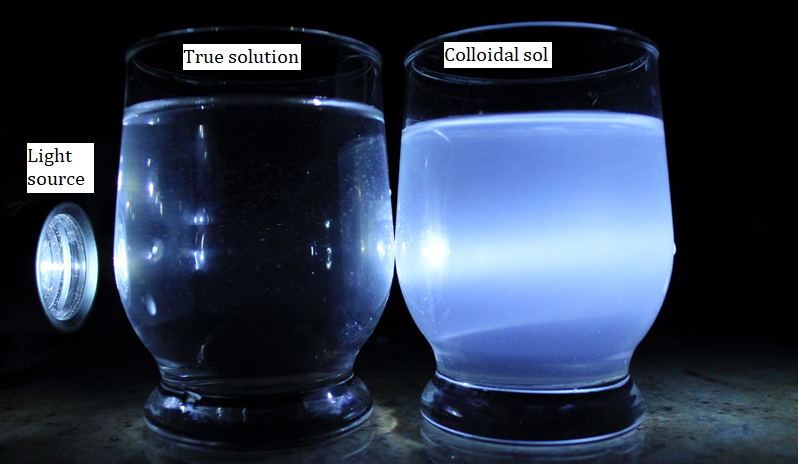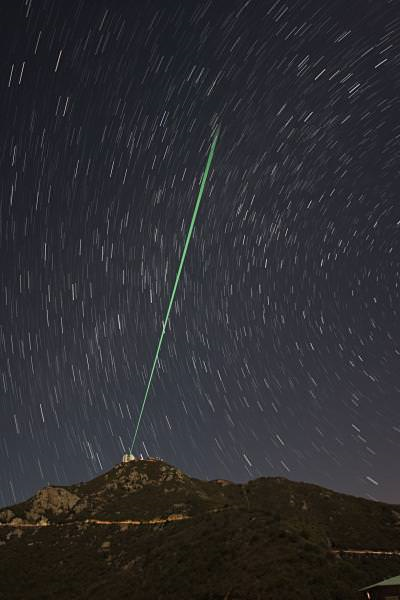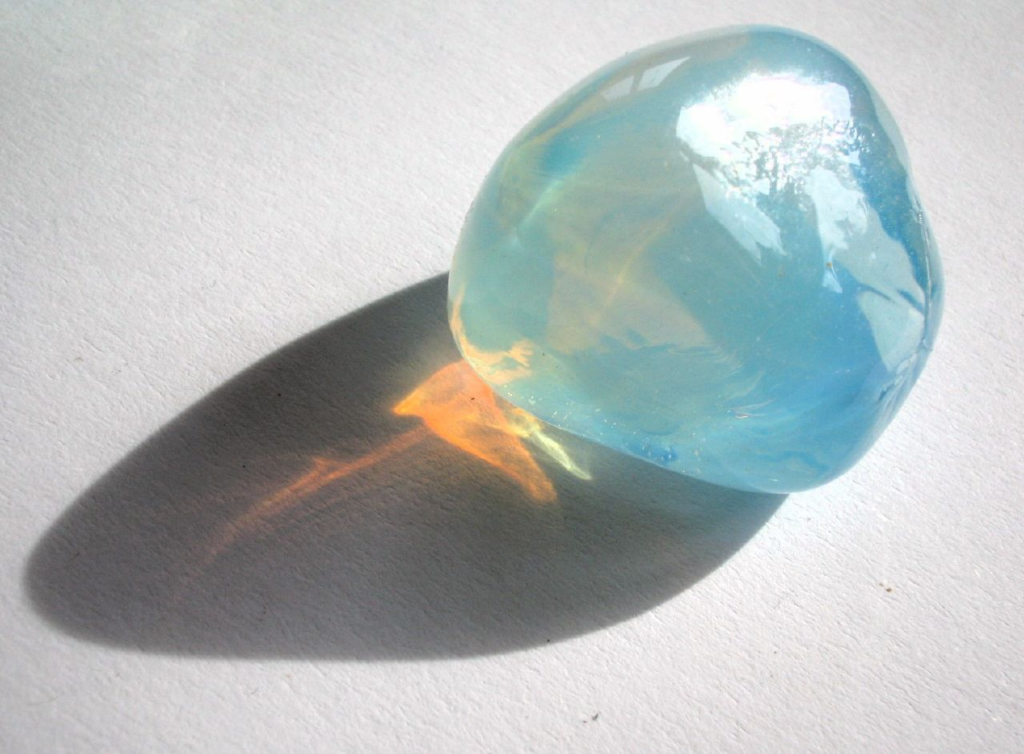The Tyndall Effect, also known as the Tyndall scattering, is a phenomenon in which light incident at a colloid (i.e., a homogenous mixture in which very fine microscopic particles are dispersed through another substance) is scattered. It is named after John Tyndall, a 19th-century physicist.
Index
History
John Tyndall was a pioneering Irish physicist of the 1800s, who is perhaps most well known for his study of the capacities of various gases to absorb heat and also for being the first scientist to prove the greenhouse effect with his experiments.
One of the implications of his work with gases was that they had to be pure, and therefore must not contain any microscopic impurities and dust particles.
During some of his experiments, John Tyndall determined that light passed through pure gases relatively unchanged. In contrast, the light was highly scattered when it passed through impure gases that had dust particles suspended in them.
He thus used this phenomenon to check the purity of the gases he used for experimentation. This scattering of light, when passed through a colloidal sol, is the Tyndall effect.
Understanding the Tyndall Effect
Let us have a in-depth understanding of this phenomenon.
What is a Colloid?
A colloid is a mixture of microscopic particles and another substance. The microscopic particles, which can have sizes in the range of 1 to 1000 nanometers, are dispersed throughout a second substance.
International Union of Pure and Applied Chemistry’s (IUPAC for short) definition of the term colloidal state is as follows:
The term refers to a state of subdivision, implying that the molecules or polymolecular particles dispersed in a medium have at least in one direction a dimension roughly between 1 nm and 1 μm, or that in a system discontinuities are found at distances of that order.
IUPAC Gold Book (Source)
Why do Colloids Show the Tyndall Effect?
Since the particles of a colloid are in the range of 1 to 1000 nm, which overlaps with the range of the wavelength of visible light (approximately 400 to 700 nm), these particles are just the right size to be able to scatter light when it is passed through a colloid.

Why don’t True Solutions Show the Tyndall Effect?
A true solution is a homogenous mixture of two or more substances, where one of them is a solvent in which the other materials are completely dissolved.
In a true solution, the particles dissolved are extremely small compared to a colloid (typically less than 1nm in size). This means that the particles are too small to scatter light and the Tyndall effect is therefore not observed.
Why don’t Suspensions Show the Tyndall Effect?
A suspension is a heterogeneous mixture of two or more substances, where one of them is a solvent and the other materials do not completely dissolve in the solvent.
The particles are just the right size to be suspended in the solvent. If the particles are small, the suspension is said to be a fine suspension which may even be a colloid; if the particles are big, they will eventually settle out of the solvent and precipitate.
Some fine suspensions, as mentioned earlier, are sometimes categorized as colloids and may exhibit this effect. However, in most suspensions, the particles are big and the scattering of light occurs to a much greater degree than in colloids. Due to this, the light is diffused in all directions and the Tyndall effect is not observed.
If the particles are bigger than a certain size, they become too heavy to stay suspended and will precipitate out of the solution. In this case, there are no particles in the solution to scatter the light. Therefore, the Tyndall effect is once again not observed.
Try it Out Yourself
To observe the this effect, you don’t need special equipment in a lab!
In fact, you can observe this phenomenon using a transparent container and some substances that you can find at home. All you need are:
- 2 glass containers (any transparent containers will do)
- Water
- Salt/sugar
- Milk
- Torchlight
Time needed: 10 minutes
How to observe Tyndall Effect?
- Preparing the solution.
Firstly, prepare a salt or sugar solution by mixing it in water, ensuring there is no undissolved salt or sugar in the solution.
- Splitting the solution
Split this solution equally into the two glass containers.
- Adding milk
Add milk to one of the containers in small quantities until it appears that the milk has mixed evenly throughout the solution.
- Shine a torch.
Now place the 2 containers next to each other, and shine the torch such that light passes through both the solutions.
- Observation
Tyndall effect will be observed in the solution with the milk but not in the pure salt/sugar solution, as shown in Figure 1.
Examples of Tyndall Effect
- When a car passes through a foggy environment with its headlights on, the beam of light is clearly visible in the air. This is due to the Tyndall effect.

- Astronomers and observatories use long-range lasers for Laser adaptive optics (a technique to calibrate the telescope’s mirror and improve the quality of images obtained). Tyndall effect is observed in this case when the long-range lasers are shone towards the sky.

- Milk glass, or opalescent glass, also exhibits this effect. Light passing through the glass is scattered; blue light is more prominently scattered than red light due to the higher wavelength of blue light. This scattering causes the glass to appear blue.
Since red light is not scattered as much, most of the light passing through the glass consists of red light and other lower wavelengths. This is observed in the picture where the glass appears blue and reddish-orange light passes through the glass on the side.

FAQs
The Tyndall effect, also known as the Tyndall scattering, is a phenomenon in which light incident at a colloid (i.e. a homogenous mixture in which very fine microscopic particles are dispersed through another substance) is scattered.
John Tyndall, a 19th-century Irish physicist, discovered the scattering of light that passes through a colloid.
1. Milk
2. Salt solution
3. Starch solution
4. Copper sulfate solution
Out of the given options, only milk and starch solution are colloids. Therefore the correct options are a. Milk and c. Starch solution.
